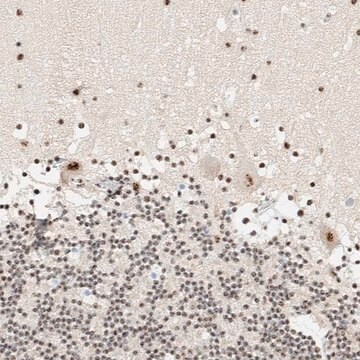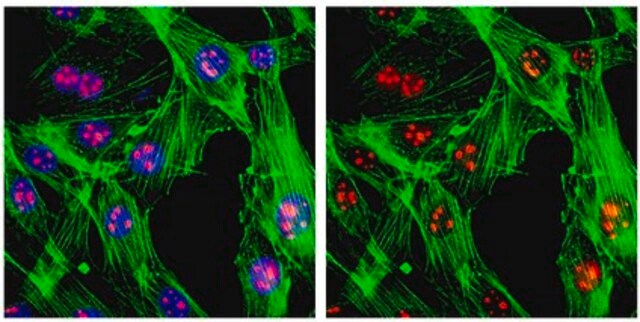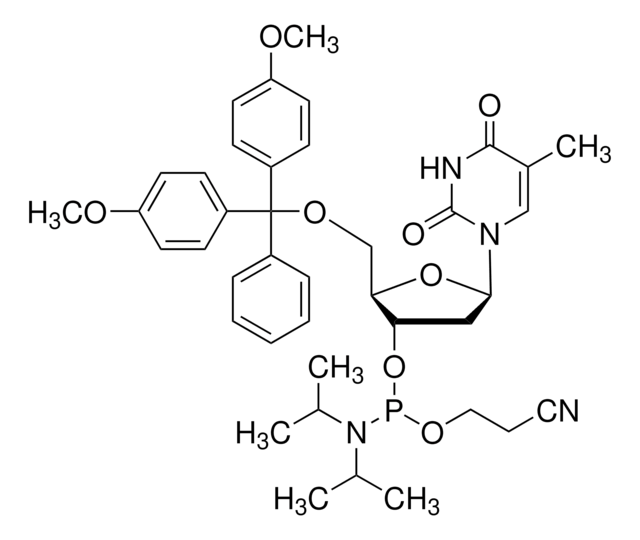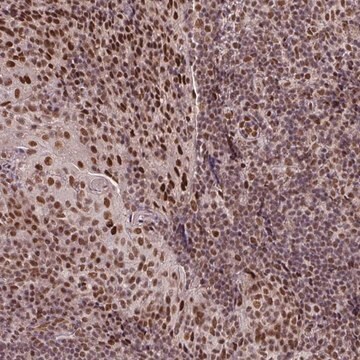S4045
Monoclonal Anti-Splicing Factor SC-35 antibody produced in mouse
clone SC-35, ascites fluid
Synonyme(s) :
Anti-SC-35, Anti-SC35
About This Item
Produits recommandés
Source biologique
mouse
Niveau de qualité
Conjugué
unconjugated
Forme d'anticorps
ascites fluid
Type de produit anticorps
primary antibodies
Clone
SC-35, monoclonal
Poids mol.
antigen 35 kDa (a doublet)
Contient
15 mM sodium azide
Espèces réactives
frog, Drosophila, newt, rat, human
Technique(s)
electron microscopy: suitable
immunocytochemistry: suitable
immunoprecipitation (IP): suitable
indirect ELISA: suitable
indirect immunofluorescence: 1:2,000 using cultured human fibroblasts
Isotype
IgG1
Conditions d'expédition
dry ice
Température de stockage
−20°C
Modification post-traductionnelle de la cible
unmodified
Informations sur le gène
human ... SFRS2(6427)
rat ... Sfrs2(494445)
Description générale
The essential non-snRNP splicing factor SC-35 displays a speckled distribution in the nucleus that co-localizes with snRNPs, but unlike snRNPs, SC-35 does not give diffuse nuclear labelling. In the nucleus, snRNPs are concentrated in coiled bodies and in the speckled regions, whereas SC-35 is found in speckles but not in coiled bodies.
Spécificité
Immunogène
Application
- fluorescence image analysis
- immunohistochemistry
- two or three color immunofluorescence staining
- enzyme-linked immunosorbent assay (ELISA)
- immunohistology
- immunoelectronmicroscopy
- immunoaffinity purification
- immunoprecipitation
Indirect immunofluorescence: a dilution of at least 1:2,000 was determined by staining cultured human fibroblasts.
Clause de non-responsabilité
Vous ne trouvez pas le bon produit ?
Essayez notre Outil de sélection de produits.
Code de la classe de stockage
10 - Combustible liquids
Classe de danger pour l'eau (WGK)
nwg
Point d'éclair (°F)
Not applicable
Point d'éclair (°C)
Not applicable
Certificats d'analyse (COA)
Recherchez un Certificats d'analyse (COA) en saisissant le numéro de lot du produit. Les numéros de lot figurent sur l'étiquette du produit après les mots "Lot" ou "Batch".
Déjà en possession de ce produit ?
Retrouvez la documentation relative aux produits que vous avez récemment achetés dans la Bibliothèque de documents.
Notre équipe de scientifiques dispose d'une expérience dans tous les secteurs de la recherche, notamment en sciences de la vie, science des matériaux, synthèse chimique, chromatographie, analyse et dans de nombreux autres domaines..
Contacter notre Service technique








